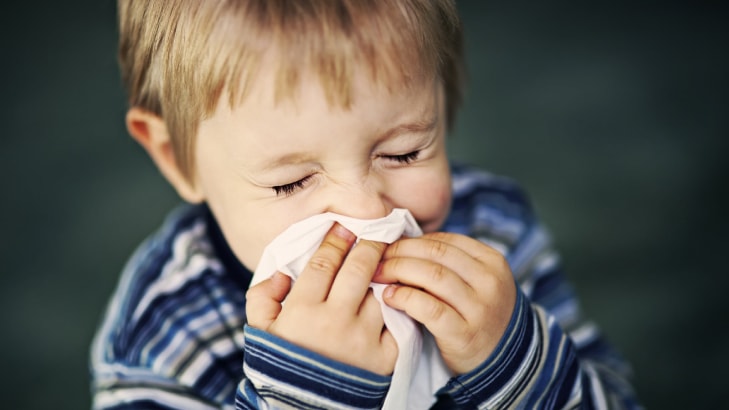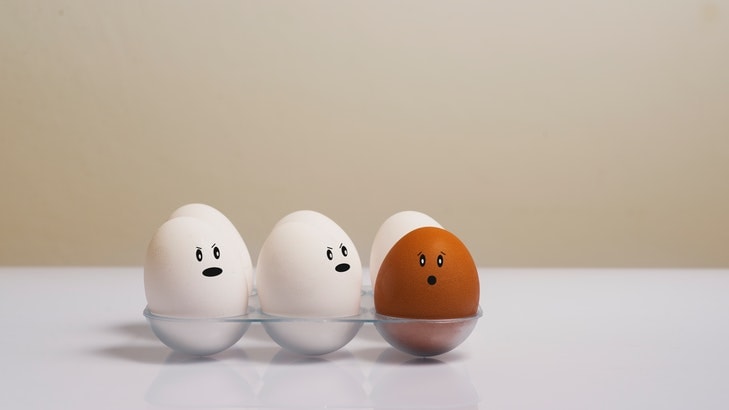Fears are a normal part of being human and necessary for our survival as a species. Fears help us determine what dangers we should avoid for our safety. In developing children, fears change over time as they are exposed to new things and situations and as they learn to master their environment. As children’s imaginations develop, new fears are often created.
There are fears that tend to be common as children develop:
Infants and Toddlers
- Strangers – As the baby is better able to distinguish their parents’ faces from the faces of others, they develop a fear of strangers, usually around 7 to 9 months until 1 year of age, but they may continue to be clingy.
- Loud noises – Sudden noises may startle babies because their sensory system is not fully developed. If the child associates the noise to a certain place, they may be reluctant to go there.
- Costumes – With Halloween approaching, it is important to remember that babies and toddlers can be easily confused and frightened by costumes, even if you put one on.
Preschoolers
- Separation anxiety – Usually develops between 1 and 4 years of age, children may feel fears when separating from parents due to their increasing attachment.
- Dogs (and other animals) – Our brains are wired to protect us from danger and combined with imaginations dogs can seem scary since they might “eat my head with his giant mouth or lick my face off,” according to the child.
- Dark – Imagination plays tricks in the dark, too. “Oooh, it’s dark. There’s a shadow. It must be a monster! He’s going to get me!!!!” Children find it difficult to make sense of the dark because they cannot see much.
- Change – Changes can be challenging to young children because they are working hard to make sense of the world. If you suddenly rearrange all the furniture, it can be unsettling for them.
- Bathroom fears – there are a whole host of toilet fears that can pop up when beginning toilet training. Kids may be afraid they will fall in the toilet, that bugs will come out of the toilet, or that pooping will hurt. Those last two fears tend to continue when kids are older – so be prepared for that! (I recently saw a video that a snake came up through the toilet, so my fears have resurfaced!).
Elementary Schoolers
- Nightmares – Bad dreams can feel very real. Children sometimes have difficulty distinguishing between real and imaginary.
- Death – Questions and fears about death often surface around age 7. Children’s brains grab onto this because they can now understand more abstract concepts.
- Real World Stuff – As children become more aware of the world around them, they tune into tragedies such as tornados, earthquakes, or car accidents, or other scary things like fires, burglaries, or thunderstorms.
How to help your child:
- Do not tell your child that the fear is not real. The fear is real to your child. Encourage your child to talk about it to help them develop power over their fears.
- While you do not want to treat the fear as silly, you don’t want to cater to it either. Provide support and guidance as your approach a feared thing or situation. “I know you feel scared right now. I am here for you and it is going to be ok.”
- Helping children feel powerful over their fears is, well, powerful! Kids can rate their fear from 1 to 10, or younger kids can talk about how “full of fear” they are, such as “up to my knees”, or “up to my head”. (www.kidshealth.org – D’Arcy Lyness).
- Help your child learn to be the boss of their fears and “talk back” to what scares them. Fears are not necessarily based in fact. Help your child with the facts about what they are afraid of, such as tornadoes, burglaries, etc. Remind them to tell themselves these statements when they are afraid.
- Teach and practice coping strategies. Encourage mantras, such as “I can do this” as they go near the scary item. Try relaxation techniques such as visualization of floating or deep breathing by blowing up an imaginary balloon in the belly.
- Teach and practice coping strategies. Encourage mantras, such as “I can do this” as they go near the scary item. Try relaxation techniques such as visualization of floating or deep breathing by blowing up an imaginary balloon in the belly.
- When tackling fears, start out with small steps. Do not expect your child to be able to go up and pet a dog, for example, but they could watch you put your hand out for a sniff. Do not avoid the scary things as you are then teaching your child, “You are right. This is scary and you cannot handle it.”
If your child’s fears seem to be so big that their every day functioning is impacted, such as they are not able to go to the doctor or seeing a dog far away on the street sends them into panic, get some help. Check out the resources below and talk to your family physician. The earlier you address fears and phobias the better since they tend to grow if left unchecked.
Resources:
Freeing Your Child From Anxiety by Tamar E. Chansky
AT Parenting Survival for All Ages, www.anxioustoddlers.com
Helping Your Anxious Child by Rapee, Wignell, Spence, Cobham, and Lyneham.
Anxious Kids Anxious Parents by Reid Wilson and Lynn Lyons
Anxiety Canada, www.anxietycanada.com
Children’s Books:
There’s a Nightmare In My Closet by Mercer Mayer
There’s an Alligator Under My Bed by Mercer Mayer
Scaredy Squirrel by Melanie Watt
The Invisible String by Patrice Karst (for separation anxiety)
Franklin in the Dark by Paulette Bourgeois
The Dark by Lemony Snicket
Curious George Goes to the Hospital by Margaret Rey and H.A. Rey
Thunder Cake by Patricia Polacco
First Day Jitters by Julie Danneberg






